Foraging for food and plants used for medicine can often be done right in the organic backyard or local unsprayed park with ease.
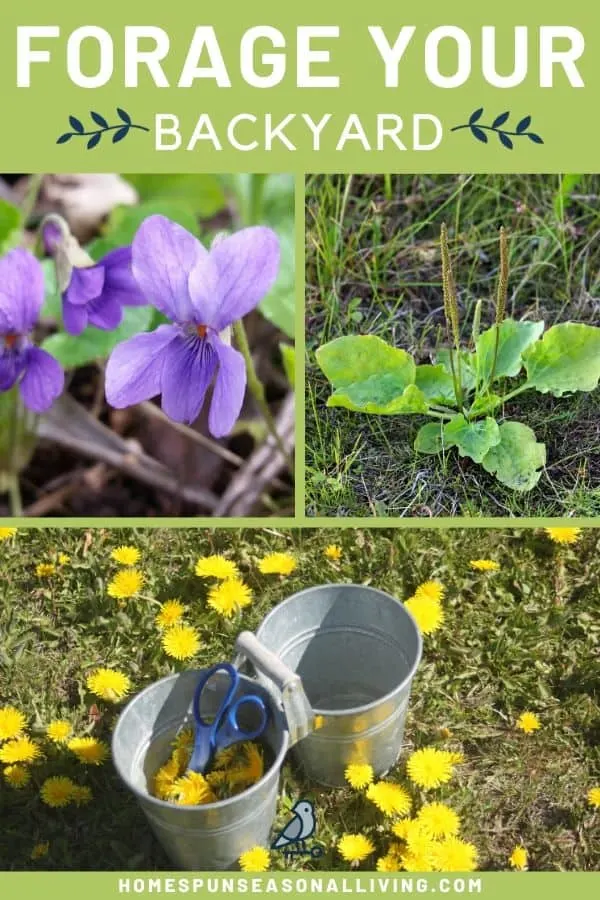
Get started or even increase your foraging adventures by using these edible wild plants that are common and likely close by instead of searching for the more rare or exotic.
And the even more wonderful thing is that these same edible herbs and flowers can also double as healing plants for a number of common ailments.
[mailerlite_form form_id=16]Foraging in the Backyard
Join me as I talk with Colleen from Grow, Forage, Cook, Ferment to learn all about foraging edible and medicinal plants right in your backyard. You can watch our conversation in the video and get links and more info below.
Colleen is an amazing resource and inspiration. Her goal is to inspire naturally minded people to live with the seasons, become more self-sufficient, and protect their health through food and herbal remedies. She does this by offering simple and healthy recipes for cooking, fermenting, and preserving real food from scratch; straightforward guides and ideas for growing and foraging food and medicine; and easy homemade herbal remedies and body care products. Find her information on her site and don’t forget to sign up for her newsletter while you’re there!
Chickweed
This tender green plant is easy to overlook. Chickweed flowers are small and not at all showy, the leaves too are small even though the plants tend to grow in large patches.
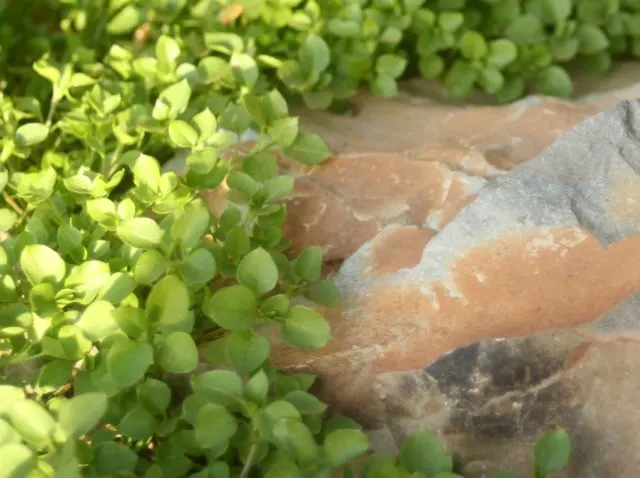
Using Chickweed for Food
The flavor is a bit on the bland side but it makes a great and nutritious base for adding other stronger flavors.
Consider using it in pesto with lots of garlic and more pungent greens to balance out bitterness or herbs that otherwise hot or strongly flavored.
Use it like any green, toss it raw in salads, cook it in soups, etc.
Using Chickweed for Healing
Chickweed is renowned for its cooling and itch relieving power.
Blend fresh chickweed with apple cider vinegar and use it in your bath to help calm itchy skin.
Infuse it in oil for a healing and soothing salve for the skin.
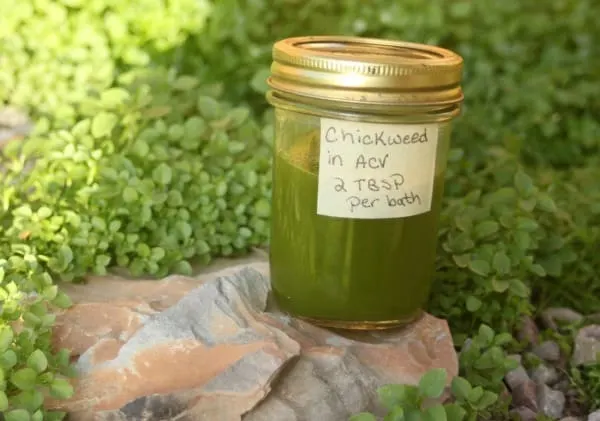
Dandelion
Dandelion is one of the most recognizable edible and medicinal plants in most backyards. Most of us, even if completely new to the idea of foraging, can identify a dandelion plant.
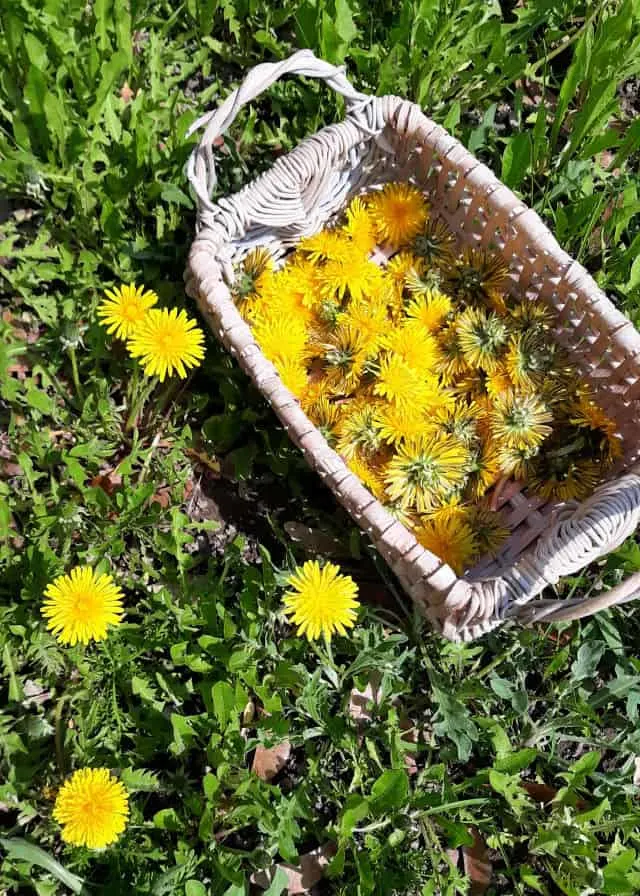
All parts of the dandelion are useful from the root to the flower (though the flower stems are most often ignored) giving us plenty of ways to get creative with it in our home.
Using Dandelion for Food
The greens of dandelion can be used like spinach or any other fresh green. The smaller leaves tend to be the most palatable, as the leaves get bigger, they tend to get more bitter and tougher.
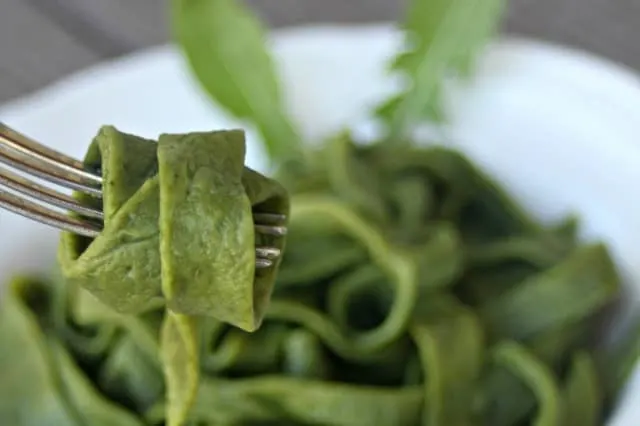
The flowers have a faint honey like flavor making them an ideal addition to sweet treats. Toss the petals into cookies, cakes, breads, and more.
The roots are slightly bitter but most often are used for a coffee-like herbal tea substitute.
Here are a few recipes to get you started:
Using Dandelion for Healing
The flowers of dandelion have a wide variety of healing power. Infuse them in oil to rub on arthritic joints. Turn that infused oil into a salve to rub onto chapped skin and sore joints.
Dandelion roots have been long used a bitter to aid digestion and to help rid the body of uric acid. Use it as a tea or make a bitter tincture.
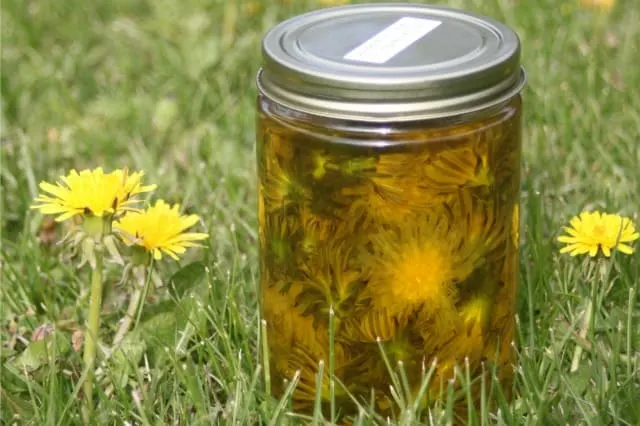
Plantain
Most folks walk right over plantain without even noticing it. It’s mostly in the lawn and in the garden growing well if we only take notice. Like chickweed, there’s not much showy or noticeable about plantain and yet it can offer us so very much.
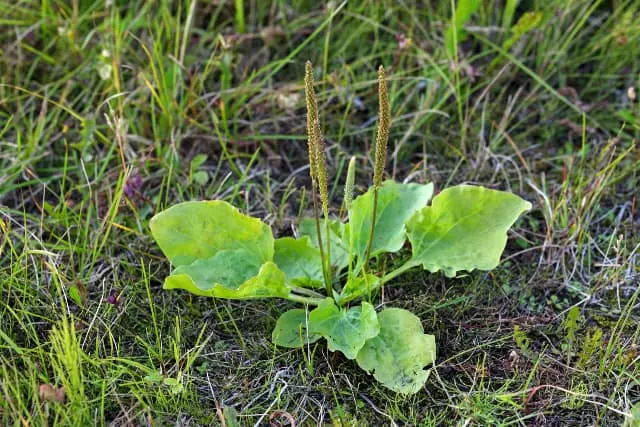
Using Plantain as Food
Plantain leaves technically edible. However, they are quite fibrous and tough while often being quite bitter. You can drink them as tea as well.
Using Plantain for Healing
Where the magic of plantain lies is in its ability to stop itch and sting. If you get bitten by bug or some kind of rash while outside, simply chew on a few plantain leaves and apply them directly to the wound as type of poultice.
Infuse the leaves in oil for a simple and lovely salve that will help calm the itch associated with rashes, dry skin, and more.
Wild Violets
These early spring beauties have so much to offer our bodies and souls. Their bits of greenery and tiny, showy flowers tend to greet us shortly after winter offering a chance to view some wild color and flowers as well as some fresh wild food.
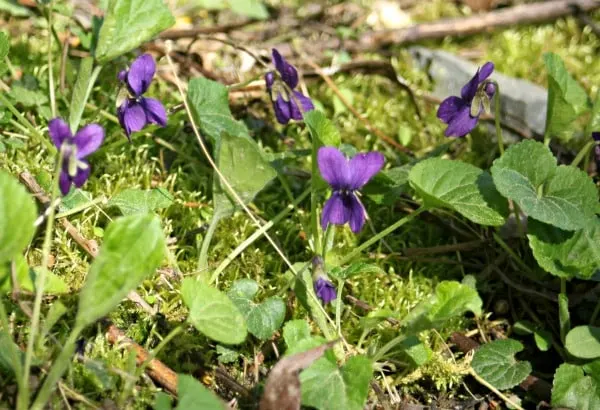
Using Wild Violets for Food
The leaves and flowers are edible.
Toss the flowers into salads for a beautiful hit of color into an otherwise green bowl. Alternatively, use the flowers as edible, colorful decorations to cakes and cookies.
Use the leaves like you would spinach: eat them raw, blend into smoothies, cook into casseroles, etc.
Using Wild Violet for Healing
Internally, wild violets are great for coughs. Infuse the flowers in some honey for a soothing and sweet treat to take during cold and flu season.
Externally, wild violets help soothe dry skin and varicose veins. Infuse them in oil to apply directly to skin or turn it into a balm or lotion.
Purple Dead Nettle
The ‘dead’ in purple dead nettle refers to the fact that it is without any sting, unlike stinging nettle. This means you can harvest it without worry for gloves or protective equipment.
The gorgeous green and purple leaves from the mint family are a sight to behold and often easily found in gardens and backyards.
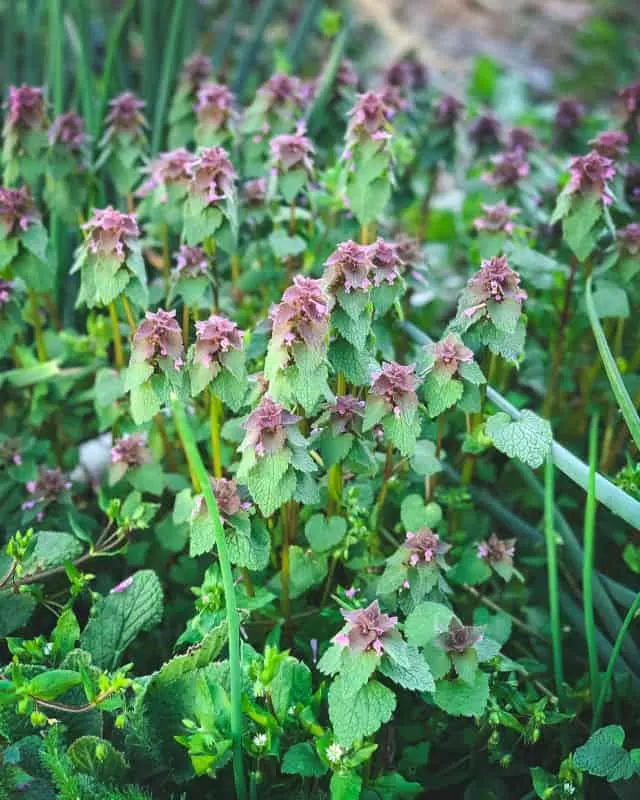
Using Purple Dead Nettle for Food
The leaves are a bit fuzzy which can make the texture plain unpalatable for many folks. A few leaves in salad of other leafy greens isn’t so bad. However, pureeing the leaves will be better for most folks. That makes purple dead nettle ideal for pureed green soups and pesto.
Using Purple Dead Nettle for Healing
Purple dead nettle has anti-bacterial and anti-fungal properties. Get the most of these by infusing it in oil and then using it for a healing salve of your own. Also consider using the fresh leaves a poultice for wounds.
Take Your Foraging Adventures Further
Want to learn even more about foraging? Colleen has an amazing Gather & Root foraging e-course that includes videos on identification and use of over 60 common plants, berries, and mushrooms.
Sign up here to learn more and get a special discount on the e-course
This is an amazing opportunity to learn from someone experienced and get tons of practical advice that you can use for eating and making remedies in your own home.
Deb
Tuesday 16th of June 2020
You say infuse in oil for healing. What oil would that be please?
Kathie Lapcevic
Tuesday 16th of June 2020
You can use any oil you like for infusing - I generally go for basic olive oil. Grapeseed will work, jojoba, etc. Honestly whatever you prefer and have on hand.
Jeanne Luddeni
Friday 12th of June 2020
I love this idea of foraging as I'm in Michigan and they have tons of food in the wild. But at this moment I'm in an area where they spray yes spray everything!!!! It's a bunch of old people and they hate weeds I'm in a condo area but soon to have my farm in the UP. I'm going to foraging for everything lol. Love your articles.